Mythology

Trojan Horse sketch.* Based on a Sculpture-by-the-Sea scultpture. Tamarama Beach. Sydney.
Many of the following etchings make reference to ancient myths; mainly those from Ancient Greece.
-
the human spirit rests (S)
-
iphigenia (S)
-
achilles (S)
-
zeus terribilis (S)
-
cyclops (M)
-
eurydice mourns (M)
-
hermes about to take flight (S)
-
atlas about to lift the world (S)
-
hector (S)
-
ancient homage to the cypriot (L)
-
lithuanian angel (M)
-
australian cronus (M)
small (S) medium (M) large (L) extra large (XL) not available (N/A) nic_nicola@hotmail.com
______________________________________________________________________________________________________________________________________
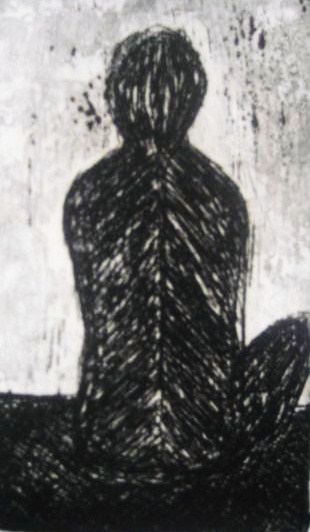
56 ‘The Human Spirit Rests.’
B&W. 4”X2.5”. copperplate. S
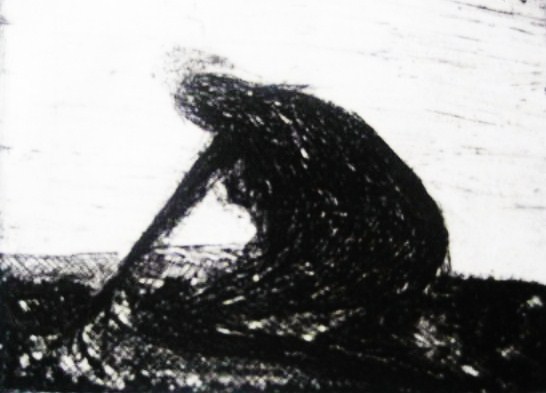
57 ‘Iphigenia’
B&W.3”X4”aquatint. copperplate. S. N/A.
Iphigenia was pragmatically sacrificed by her father Agamemnon – the military commander of the Greek army that would attack Troy. - to appease the goddess Artemis so the winds would return to take the Greek fleet to Troy. Iphigenia is seen here tragically awaiting her death; having been lured to her it by her father’s promise that she would be married to Achilles.
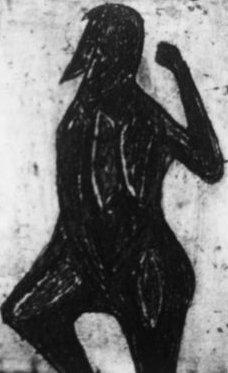
‘Achilles.’ B&W. 10cmX7cm. aquatint. zinc plate S
Achilles the hero of the Greeks was the perfect killing machine. A self-absorbed demi-god who it can be argued was compelled more so by battle lust - than by any noble cause - to wreak his violence on the battlefield.
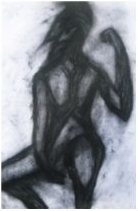
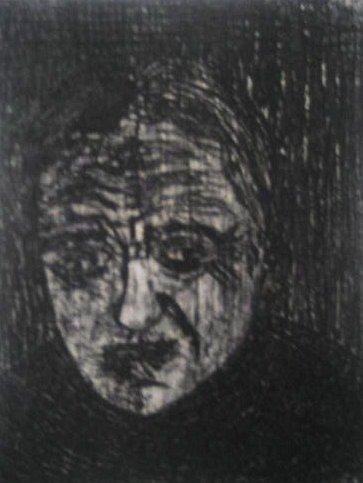
59 Zeus terribilis.’
B&W. 3” X 4”. copperplate. S. N/A.

60 ‘Cyclops.’
B&W.6”X4”.copperplate. M
61 ‘Eurydice Mourns.’
B&W. 4”X5”. zinc plate. M
This image intimates Eurydice in the Underworld playing her flute while meditating on love lost - a too common melancholy human reflection. Orpheus is gone, ‘doomed’ to return to the surface without his lover - due to his own careless forgetfulness. What is also forgotten is Eurydice herself as the narrative of this tragic story focuses on Orpheus’s misery. Yet, what is soothing is the legacy of his music for Eurydice which I like to think provides a beautiful solace for her sad, imprisoned soul.
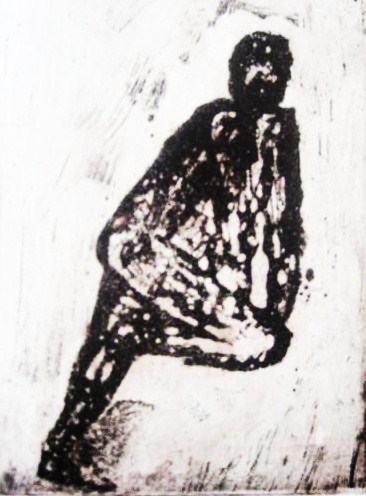
62. Hermes about to take flight.
2.5" X 1". sepia. sugarlift. copperplate. S. N/A.
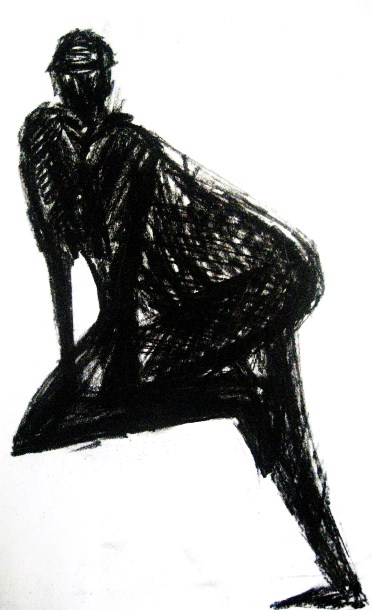
Hermes charcoal drawing.
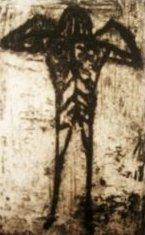
63. Atlas about to lift the World.
3"X1". sepia. sugarlift. copperplate. S N/A.
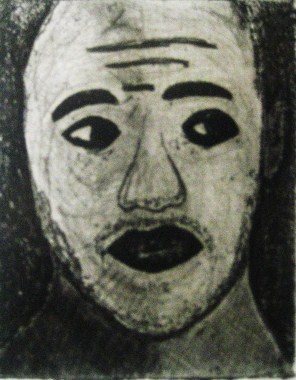
64. Hector
1"X2". B&W. copperplate. S. N/A.
A photograph of Thiere Henri while he was Arsenal captain was used to 'model' this image. In regards to the English Premier League I should declare in the interests of transparency that I am an Arsenal supporter. However, I congratulate Thiere Henri's present team Barcelona in 2009 winning the Champion Leagues against Manchester United; especially considering that Barcelona has UNICEF emblazoned on its jerseys. Bravo.
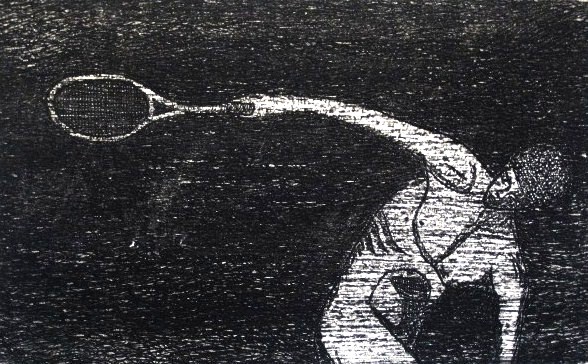
65. Ancient Homage to the Cypriot.
In commemoration to the Greek Cypriot Marcos Baghdatis for eaching the 2006 Australian Open Final.
B&W. 8”X5”. zinc plate. L.
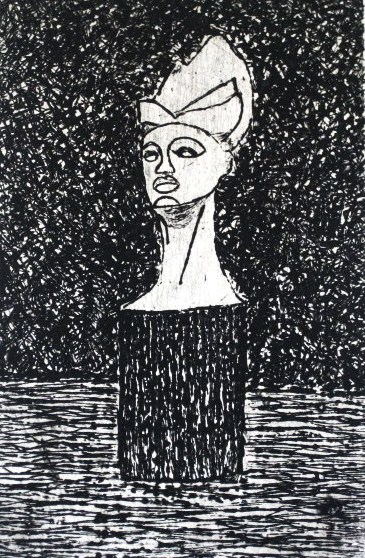
66. Lithuanian Angel.
(Orpheus in the River). B&W. 6”X4” copperplate. M
When I eventually saw this angel head in the river at Uzupis in Vilnius I was reminded of Orpheus who had his decapitated head thrown into a river by the jealous Maemids who were female followers of Dionysus. It is said Orpheus’s head cried out his love for Eurydice as he floated down the waters. The angel head was carved in an artist’s community by the river in Uzupis which is a sort of bohemian area in Vilnius and it was also an area where many Russians lived; in the pub by the river artists & writers would gather and I remember they were organising to have an angel monument built in the main street of Uzipus for an artist friend who had died before time.
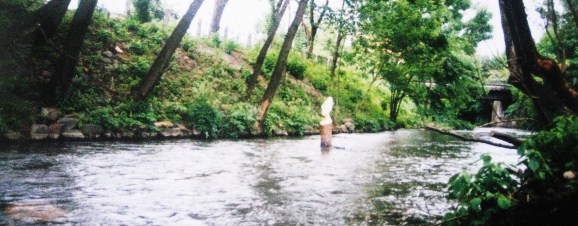
Lithuanian angel head which to me stands as Orpheus in a river in the Uzupis district of Vilnius.

Lithuanian Angel under creation.
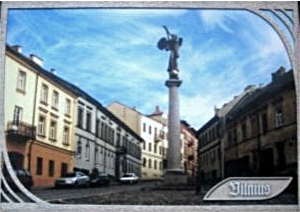
Postcard of Angel in Uzupis
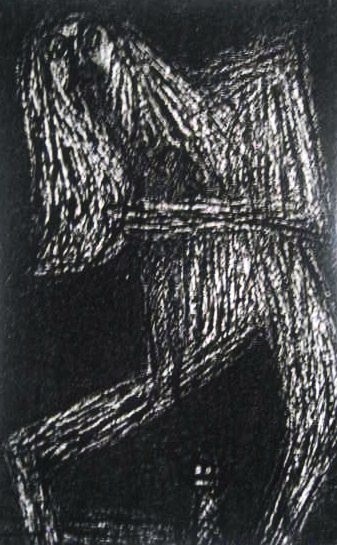
67. Australian Cronus.
6"X4". B&W. copperplate. M. N/A.
This image is obviously based on Goya's Saturn eating his children which I interpret as dealing with the horrors of our own inhumanity. I have appropriated the image to reflect my anger at the Howard government's apalling treatment of refugees. I believe there is a legimate case for John Howard to be indicted at the Hague for crimes against humanity.Although, it should be remembered that it was the Australian Labor Party when in government before the Liberals that established the 'gulag' of detention centres in the Australian deserts; far away from the required legal services that refugees have a right to have easy access too as stated under international human rights and refugees conventions to which Australia has signed.
________________________________________________________________________________________________________________
FURTHER INFORMATION: Australian Cronus. B&W. 6”X4”. zinc plate. Cronus (the Greek god who ate his
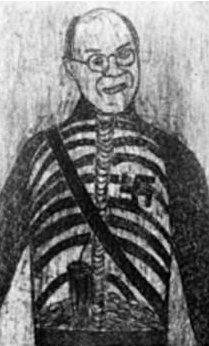
Australian Fuhrer. Placed here in relation to the above image. This etching is based on John Heartfield's satirical photomontage of Adolf Hitler. (Full details in Offcuts 2005-2009).
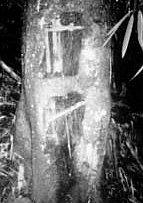 Babies buried in a tree. Indonesia.
Babies buried in a tree. Indonesia.